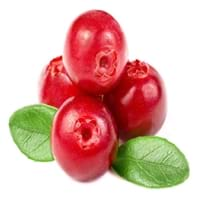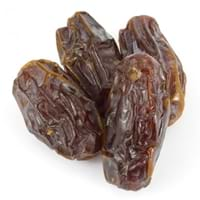Health Benefits
Cancer prevention, Heart care, Kidney stone treatment, Scurvy treatment, Ulcer prevention
Cancer prevention, Cures gastro-intestinal troubles, Diarrhea treatment, Heart care, Heat stroke treatment, Improves muscular strength, Prevents constipation, Prevents nerve damage, Strengthening of bones
General Benefits
Anti-inflammatory properties, Boosts immune system, Digestive aid, Fights against infections, Strengthens bones
Boosts immune system, Maintains healthy cholesterol level, Strengthens bones
Skin Benefits
Anti-aging benefits, Reduces wrinkles, Skin rejuvenation, Treatment of acne
Anti-aging benefits, Brightens and lightens complexion, Reduces wrinkles, Treatment of skin diseases
Hair Benefits
Promotes longer and healthier hair, Protects hair, Treatment of dandruff
Prevents hair loss, Promotes longer and healthier hair, Protects hair, Regulates hair growth
Allergy Symptoms
Anaphylaxis, Breathing difficulty, Itching, Skin rash, Swelling of mouth, tongue or lips
Redness of eyes, Runny nose, Sneezing, Watery eyes
Side Effects
Allergic reaction, Diarrhoea, Nausea, Stomach pain, Vomiting
Allergic reaction, Diarrhoea, Intestinal gas, Stomach pain, Tooth decay, Weight gain
Best Time to Eat
Any time except an hour after meal, Don't consume at night and before bed
Any time except an hour after meal, Don't consume at night and before bed
Vitamin B5 (Pantothenic Acid)
Vitamin C (Ascorbic Acid)
Vitamin K (Phyllochinone)
Calories in Fresh Fruit with Peel
Calories in Fresh Fruit without Peel
Not Available
Not Available
Calories in Frozen Form
Not Available
Calories in Canned Form
Not Available
Season
Autumn
Spring, Summer
Varieties
Early Black, Howes, Ben Lear and Stevens
Barhi, Dayri, Deglet Noor, Halawy, Khadrawy, Medjool, Thoory and Zahidi
Color
Red
Black, Brown, Red, Yellow
Origin
North America
Iraq
Soil Type
Clay, Sandy, Well-drained
Clay, Loam, Sand
Climatic Conditions
Warm
Hot, Warm
Facts about
- Europeans thought the cranberry blossom looked like the head of a sandhill crane, hence the name Cranberry.
- They are also known as bounce berries as they bounce when they ripe.
- Cranberries do not grow in water.
- Date is known as the tree of life in Middle east.
- Date palms cover 3% of the earth's total farmlands.
- Scholars believe that date (and not apple) was the real fruit mentioned in the Bible's Garden of Eden.
Spirits
Yes
Not Available
Cocktails
Yes
Not Available
Top Producer
United States of America
Egypt
Other Countries
Azerbaijan, Belarus, Bulgaria, Canada, Latvia, Macedonia, NA, Romania, Tunisia, Ukraine
Algeria, Iraq, Oman, Pakistan, South Africa, United Arab Emirates
Top Importer
Europe
India
Top Exporter
United States of America
United Arab Emirates
Botanical Name
Vaccinium Macrocarpon
Phoenix Dactylifera
Synonym
Oxycoccus macrocarpus
Not Available
Subkingdom
Tracheobionta
Tracheobionta
Division
Magnoliophyta
Magnoliophyta
Class
Magnoliopsida
Liliopsida
Subclass
Dillenhidae
Arecidae
Family
Ericaceae
Arecaceae
Species
Vaccinium macrocarpon
P. dactylifera
Difference Between Cranberry and Date
We might think that Cranberry and Date are similar with respect to nutritional value and health benefits. But the nutrient content of both fruits is different. Cranberry and Date Facts such as their taste, shape, color, and size are also distinct. The difference between Cranberry and Date is explained here.
The amount of calories in 100 gm of fresh Cranberry and Date with peel is 46.00 kcal and 282.00 kcal and the amount of calories without peel is Not Available and Not Available respectively. Thus, Cranberry and Date belong to and category.These fruits might or might not differ with respect to their scientific classification. The order of Cranberry and Date is Ericales and Arecales respectively. Cranberry belongs to Ericaceae family and Date belongs to Arecaceae family. Cranberry belongs to Vaccinium genus of Vaccinium macrocarpon species and Date belongs to Phoenix genus of P. dactylifera species. Beings plants, both fruits belong to Plantae Kingdom.









